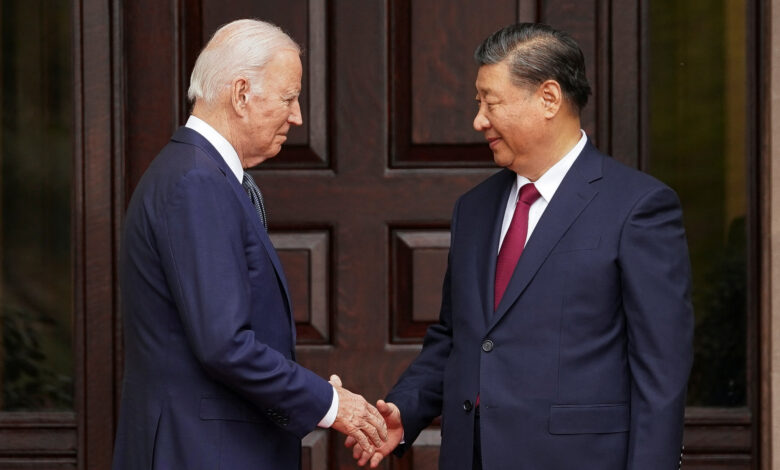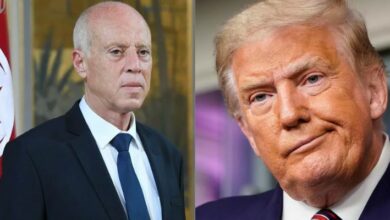President Xi Jinping Meets with U.S. President Joe Biden

On November 15 local time, President Xi Jinping and U.S. President Joe Biden held a summit meeting at Filoli Estate, San Francisco. The two heads of state had a candid and in-depth exchange of views on strategic and overarching issues critical to the direction of China-U.S. relations and on major issues affecting world peace and development.
President Xi Jinping noted that there are two options for China and the United States in the era of global transformations unseen in a century: One is to enhance solidarity and cooperation and join hands to meet global challenges and promote global security and prosperity; and the other is to cling to the zero-sum mentality, provoke rivalry and confrontation, and drive the world toward turmoil and division. The two choices point to two different directions that will decide the future of humanity and Planet Earth. The China-U.S. relationship, which is the most important bilateral relationship in the world, should be perceived and envisioned in this broad context. For China and the United States, turning their back on each other is not an option. It is unrealistic for one side to remodel the other. And conflict and confrontation has unbearable consequences for both sides. Major-country competition cannot solve the problems facing China and the United States or the world. The world is big enough to accommodate both countries, and one country’s success is an opportunity for the other.
President Xi Jinping elaborated on the essential features of Chinese modernization and its significance, China’s development prospects, and its strategic intention. He pointed out that China’s development is driven by its inherent logic and dynamics. China is promoting the great rejuvenation of the Chinese nation on all fronts through Chinese modernization. It will not take the old path of colonization and plundering, or the wrong path of seeking hegemony with growing strength. It does not export its ideology, or engage in ideological confrontation with any country. China does not have a plan to surpass or unseat the United States. Likewise, the United States should not scheme to suppress and contain China.
President Xi Jinping pointed out that mutual respect, peaceful coexistence and win-win cooperation are the lessons we learned from 50 years of China-U.S. relations as well as the conflicts between major countries in
history. China and the United States should put in a lot of efforts to follow them. As long as the two countries respect each other, coexist in peace and pursue win-win cooperation, they will be fully capable of rising above differences and find the right way for the two major countries to get along with each other. In Bali last year, the U.S. side stated that it does not seek to change China’s system, start a new Cold War, revitalize its alliances against China, support “Taiwan independence”, or engage in a conflict with China.
In San Francisco, China and the United States should assume a new vision and build together five pillars for China-U.S. relations.
First, jointly developing a right perception. China is consistently committed to having a stable, healthy and sustainable relationship with the United States. At the same time, China has interests that must be safeguarded, principles that must be upheld, and red lines that must not be crossed. We hope that the two countries could be partners that respect each other and coexist in peace.
Second, jointly managing disagreements effectively. Disagreements should not be a chasm that keeps the two countries apart. Instead, the two sides should look for ways to build bridges to help them walk toward each other. It is important that they appreciate each other’s principles and red lines, and refrain from flip-flopping, being provocative, and crossing the lines. They should have more communications, more dialogues and more consultations, and calmly handle their differences as well as accidents.
Third, jointly advancing mutually beneficial cooperation. China and the United States have broad common interests in a wide range of areas, including traditional areas such as the economy, trade and agriculture, as well as emerging areas such as climate change and artificial intelligence (AI). It is important to fully utilize the restored and new mechanisms in foreign policy, economy, finance, commerce, agriculture and other fields, and carry out cooperation in such areas as counternarcotics, judicial and law enforcement affairs, AI, and science and technology.
Fourth, jointly shouldering responsibilities as major countries. The problems facing human society cannot be solved without cooperation between major countries. China and the United States should lead by example, step up coordination and cooperation on international and regional issues, and provide more public goods for the world. The two sides should keep their initiatives open to each other, or coordinate and connect them for synergy.
Fifth, jointly promoting people-to-people exchanges. The two sides should increase direct flights, advance tourism cooperation, expand subnational exchanges, strengthen educational cooperation, and encourage and support greater interactions and communication between their people.
President Xi Jinping elaborated on China’s principled position on the Taiwan question. He pointed out that the Taiwan question remains the most important and most sensitive issue in China-U.S. relations. China takes seriously the positive statements made by the United States in the Bali meeting. The U.S. side should take real actions to honor its commitment of not supporting “Taiwan independence”, stop arming Taiwan, and support China’s peaceful reunification. China will realize reunification, and this is unstoppable.
President Xi Jinping pointed out that U.S. actions against China regarding export control, investment screening and unilateral sanctions seriously hurt China’s legitimate interests. Stifling China’s technological progress is nothing but a move to contain China’s high-quality development and deprive the Chinese people of their right to development. China’s development and growth, driven by its own inherent logic, will not be stopped by external forces. It is important that the U.S. side take China’s concerns seriously and adopt tangible steps to lift its unilateral sanctions so as to provide an equal, fair and nondiscriminatory environment for Chinese businesses.
The two presidents acknowledged the efforts of their respective teams to discuss the development of principles related to China-U.S. relations since the meeting in Bali. They stressed the importance of all countries treating each other with respect and finding a way to live alongside each other peacefully, and of maintaining open lines of communication, preventing conflict, upholding the U.N. Charter, cooperating on areas of shared interest, and responsibly managing competitive aspects of the relationship. The leaders welcomed continued discussions in this regard.
The two presidents agreed to promote and strengthen dialogue and cooperation between the two countries in various areas including China- U.S. government talks on AI and the establishment of a working group on counternarcotics cooperation. They agreed to resume on the basis of equality and respect high-level military-to-military communication, the China-U.S. Defense Policy Coordination Talks, and the China-U.S. Military Maritime Consultative Agreement meetings, and to conduct telephone conversations between theater commanders. They also agreed to
commit to work toward a significant further increase in scheduled passenger flights early next year; and expand educational, student, youth, cultural, sports and business exchanges.
The two leaders underscored the importance of working together to accelerate efforts to tackle the climate crisis in this critical decade. They welcomed recent positive discussions between their respective special envoys for climate, including on national actions to reduce emissions in the 2020s and on common approaches toward a successful COP28 and on operationalization of the Working Group on Enhancing Climate Action in the 2020s to accelerate concrete climate actions.





